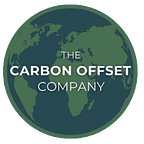Harnessing Positive Land-Use Change
- Land-Use Change is how a patch of land is changed by human intervention.
- Usually this means wildland is changed to farmland or farmland changes to urban development.
- The trend can be reversed, and farmland can be restored back into wildland.
If you keep up-to-date with climate change policy, you’ve probably heard the term “Land-Use Change.” Maybe you got the vague notion it has something to do with carbon emissions, but you’re not sure what exactly.
Great, I think most of us are in the same boat! So, let’s delve into this term and figure out why it’s important.
First, let’s figure out how land can be used?
Land can either be left wild so the ecosystem can just do its thang, or it can be cleared and developed into farmland or urban/industrial land. These are the three basic types of land use: wild, farmland, or developed.
Land-Use Change usually means that wildlands are being converted into farmland, which results in about 4.1 gigatons of CO₂ emissions per year. Why? To clear the land, the natural foliage is usually burned away, releasing all of the carbon stored in the ecosystem into the atmosphere as smoke and CO₂. After that initial burst of pollution, the land continues to emit greenhouse gas since agriculture is a huge source of GHG (nearly ¼ of annual emissions).
Clearcutting sucks.
If that land was left alone it would be a carbon sink, drawing carbon out of the atmosphere and sequestering it in the biosphere (the plants and animals). This stark difference — changing land from a negative carbon sink into a positive carbon generator — is why Land-Use Change is such a big deal. We’re really close to maxxing out our Carbon Budget, so we need all the carbon sinks we can get.
Unfortunately, Land-Use Change has affected about ⅓ of the land on Earth, just since 1960!
Recently, our complex climate models have become more accurate as scientists figured out how to use satellite data to factor in Land-Use Change. They’ve found that since 2005 Land-Use Change has been decelerating, meaning we’re still losing wildlands but we’re losing them at a slower rate now. Researchers attribute this to the 2008 economic collapse, and that rate might start accelerating now that we’re coming out of the Covid recession.
But, can the trend in Land-Use Change be reversed?
Why, yes indeed it can! Land-Use Change can also mean farmland being converted back into healthy ecosystems! One of the nature-based solutions to global warming is reseeding abandoned or under-performing farmland with native plants and turning it into a wildland carbon sink again!
Many large cities sprang up because they were surrounded by bountiful natural valleys that become farmland. In Pheonix, AZ, you can still see farmland at the edge of the city, but now urban development has taken over most of the farmland, making it impossible to revert it back to wildland. But all is not lost. In cityscapes we can still reintroduce forestry, growing plants and trees on rooftops, verges, parks, roundabouts, and terraces.
There are also efforts to teach farmers permaculture and agroforestry methods, which would create a middle-ground use, somewhere between wildland and farmland. The farmland would still produce food, but it would also provide habitat for animals, native plants, and be a carbon sink. Win-win!
In Japan, the place where farmland and forest meet is called “satoyama.”
But why do people need to get involved? Won’t abandoned farms eventually become wild again? Yes, eventually it will become wild again, but it may take years or decades. That process is called Ecological Succession, and it takes a freakin’ minute.
That’s why we need people to get involved to re-establish healthy ecosystems ASAP, ones that will support large native trees to sequester CO₂, habitat for biodiversity, and a healthy ecosystem that will sustain itself and provide co-benefits for the local community.
But who pays for reversing Land-Use Change?
Right now, pretty much no one.
There isn’t really any economic incentive to restore forests. Of course, we all know they provide benefits for everyone, but people need to feed their families and there’s just no money in reforestation.
This is where you come in.
Carbon Offsets pay for positive Land-Use Change projects. Through your contributions, we can pay for the seedlings, the logistics and hire locals to restore their forests. We have projects like this in Haiti, Mozambique, Senegal, Madagascar, and even right here in the USA. The next generation will grow alongside the young forests, and they’ll get to witness as new plants and animals arrive in the habitats their parents created with their hands.
If you want to be part of this shift in reversing Land-Use Change, or if you’re already involved and want to help even more, check out our homepage and grow your positive impact in the world.
